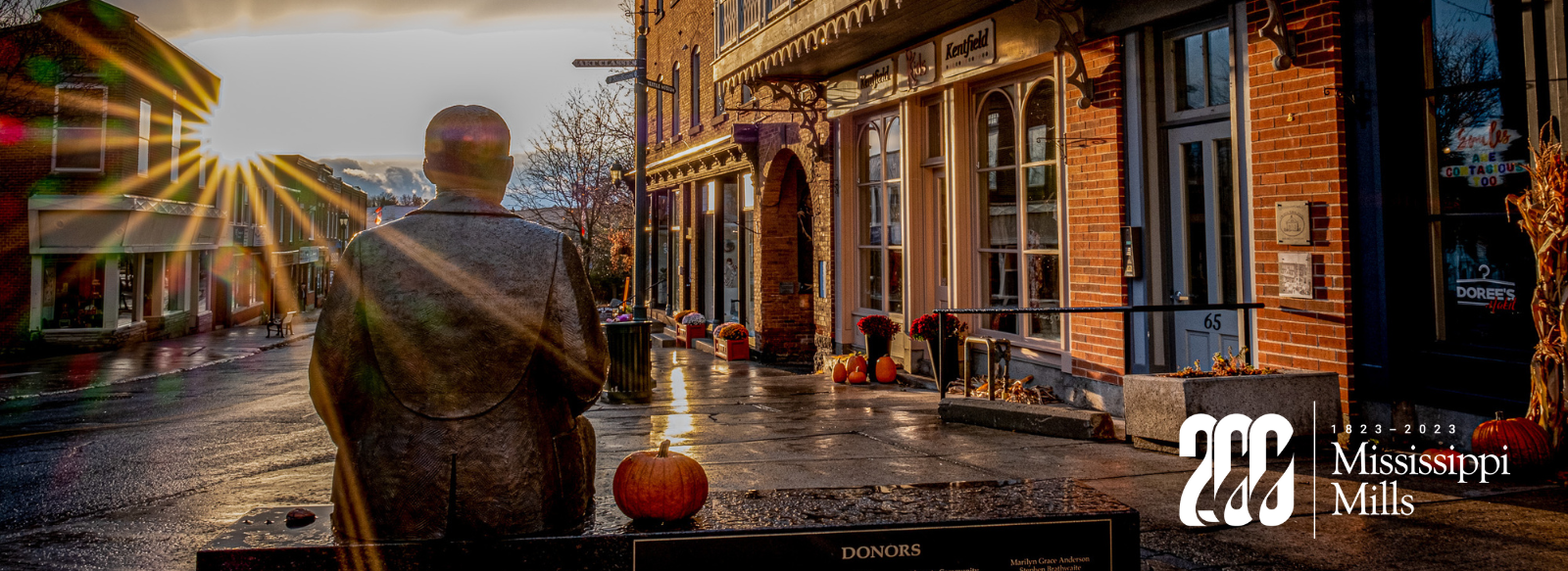Historical Figures & Monuments

Dr. James Naismith was born and raised in Mississippi Mills. He was a physical educator, physician, Christian chaplain, and sports coach, best known as the inventor of the game of basketball. The first game of "Basket Ball" was played in December 1891. In July 2019, Naismith was inducted into Toronto's Walk of Fame. For more history on Dr. James Naismith, visit the Mill of Kintail Museum or his Wikipedia page.
This statue is located in downtown Almonte. Visit him today and be sure to snap a selfie with this historic icon!

Dr. Robert Tait McKenzie is one of Canada’s most renown artists of his time and is a recognized National Historic Figure. McKenzie’s incredible life as a sculptor, philosopher and physician is celebrated in the grist mill he restored at the Mill of Kintail.
During WWI, McKenzie trained and rehabilitated thousands of men and helped lay the groundwork for modern physiotherapy as well as initiating physical education as part of the curriculum in schools. You can visit the Mill or Kintail Museum or his Wikipedia page for more information.

George Eccles was born in 1873 on a farm on Ramsay Concession 8. George was at the leading edge of technology being one of the first telegraphers in Canada. On the night of August 26, 1909 he was on the S.S. Ohio, a 340-foot steamer, off the coast of British Columbia when the ship hit an unknown rock bed and began to sink. George stayed at his post sending SOS signals to alert nearby ships of their imminent demise. Because of George's heroic actions 208 people were saved that night.
Unfortunately, George was the first telegrapher to ever die at sea and was one of five sailors who lost their lives that night. George is buried with full civic honours at St. Paul's Anglican Church cemetery on Wolf Grove Rd.
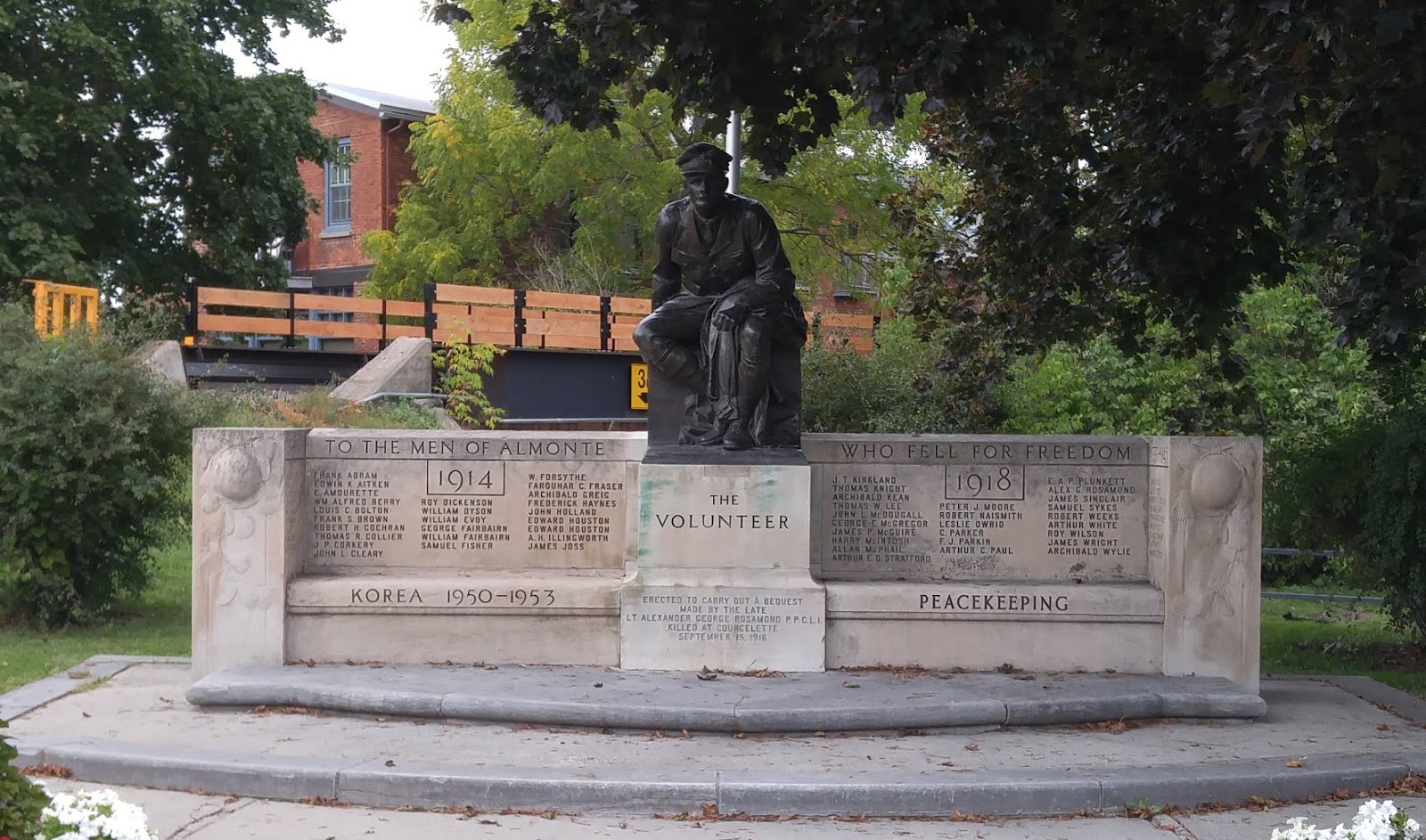
The title of this memorial is "The Volunteer". Sculpted by R. Tait McKenzie and dedicated September 11, 1923, it was constructed in memory of the men of Almonte who fell for freedom in the First and Second World Wars and the Korean War. The memorial was Requested by Alexander Rosamond in a letter he wrote to his family in July 1916. He was lieutenant in the Princess Patricia Canadian Light Infantry who had taken over leadership of the Rosamond Woolen Company from Bennett Rosamond. He noted that, if he did not return, he hoped a memorial could be build in a central place in Almonte, "to the men of Almonte who fell for freedom."
It is said that "The Volunteer" recalls the spirit of adventure of Dr. McKenzie's own early days in Almonte.
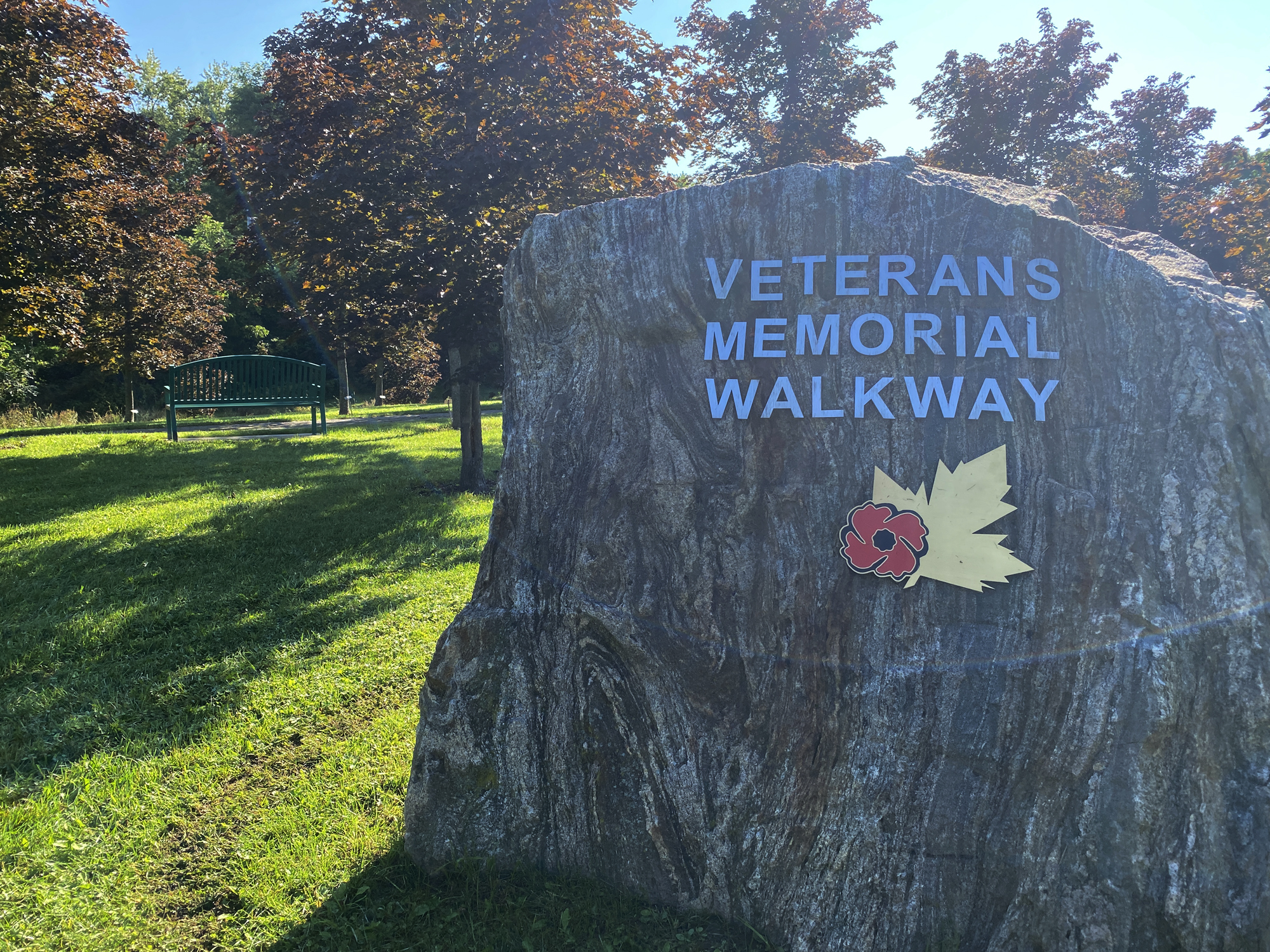
The Veterans Memorial Walkway in Almonte, between Bridge and Perth Streets, was officially dedicated on September 23, 2006, in honour of the Year of the Veterans 2005. It was a collaborative effort in support of the Almonte Legion. School children planted the trees, and are the town's unofficial guardians of the walkway. The area used to be known as Boot Hill although the story behind that name is not know. Growing on the grounds of this living memorial are 105 Maples, each with a ground mounted plaque recognizing a veteran from our community. The location of each tree and corresponding veteran's name is identified on signage opposite the flag pole.
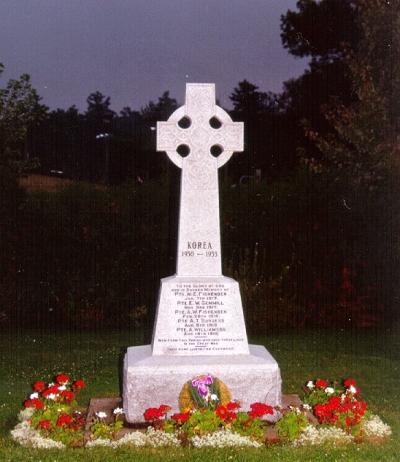
This cenotaph is situated in the Pakenham Township Community Horticultural Park on Hwy 29 which is situated on the right (south) of Pakenham Public School.
The Celtic Cross of the memorial symbolizes the Irish heritage of the early settlers to this area. The names of the brave men who made the supreme sacrifice in the World Wars are listed on the cenotaph.
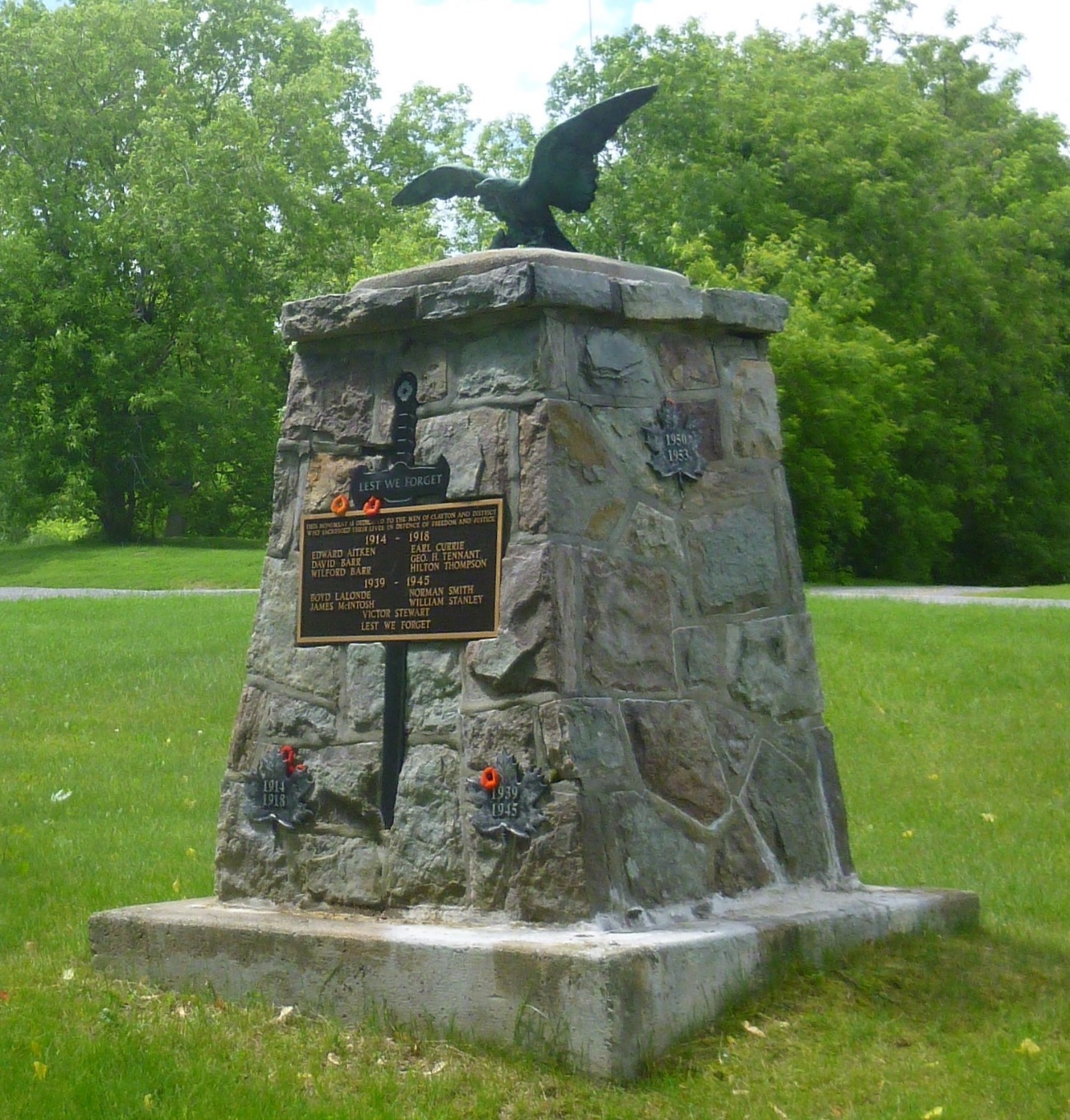
The Clayton Cenotaph was built in 1997/1998 to honour the fallen heroes from the Clayton area. It was built with the support of the Almonte Legion and the seniors of Linn Bower in Clayton.
A legion member, Comrade Lt Edmonds designed the monument and Joey Edmonds built it. Funding for the cenotaph and brass plaque was provided by the Almonte Legion and local community members.
It was dedicated on November 11th, 1998, and a Remembrance Day Parade and ceremony is held annually.
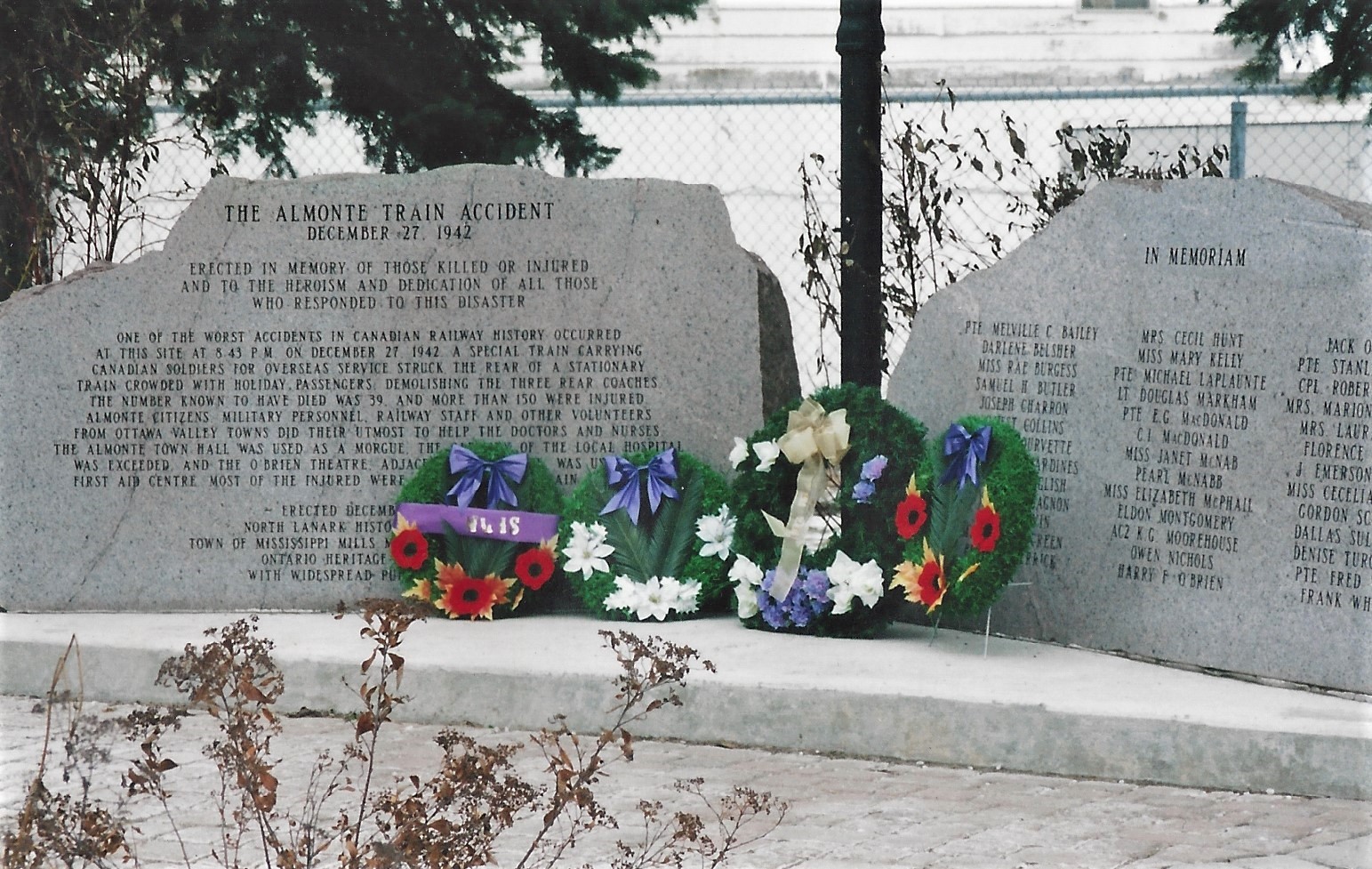
In 1942, a Canadian military troop train operated by Canadian Pacific struck the rear of a local C.P. passenger train killing thirty-nine people and injuring over 200. A memorial to the victims and survivors stands at the corner of Bridge Street and Mill Street. Plaques are marked with the names of the 39 deceased.
This accident is known as the second worst railway disaster in the history of Canadian Railroading.
For more information on the train wreck please visit the North Lanark Regional Museum, or visit their website: http://www.northlanarkregionalmuseum.com/
Located next to Almonte Old Town Hall, 14 Bridge Street.
A stone bench, with an old stone from a grist mill incorporated into its construction, sits along the bank of the Mississippi River where the Almonte Old Town Hall is located. On the back of this bench is a bronze medallion inscribed with the names William McKenzie and Catherine Shields. The inscription reads:
Stranger sit and rest and dream
The noisy millstone turns no more
Before you runs the restless stream
That seeks the ocean evermore.
In 1968, when the province purchased the mill area to put in a new dam, they tore down the mills. They kept the turbine from the sawmill and the hasher plates from the grist mill and mounted them on the spot where the grist mill once stood on the south side of the Clayton-Taylor dam park.
It is widely believed that Edward and Samuel Bellamy arrived in Clayton in 1824 and built the mills. However, there is evidence that a settler named Martin Ryan had arrived in 1823 and, having been allotted the land, built a sawmill and grist mill within 2 years. At some point, the Bellamys purchased 150 acres and mill rights from Martin Ryan.
The grist mill was originally a stone building but was rebuilt as a frame structure in 1864 which stood until it was torn down in 1968.
The sawmill was seasonal work. It generally ran from the middle of March through to September. The logs were dumped on the ice on the river over the winter and when the ice cleared in spring, the sawing began.
The sawmill was rebuilt after the great fire at Clayton in 1875 when the mill and all the lumber piled next to it burnt. 1959 was the final recorded year of operation of the saw mill.












